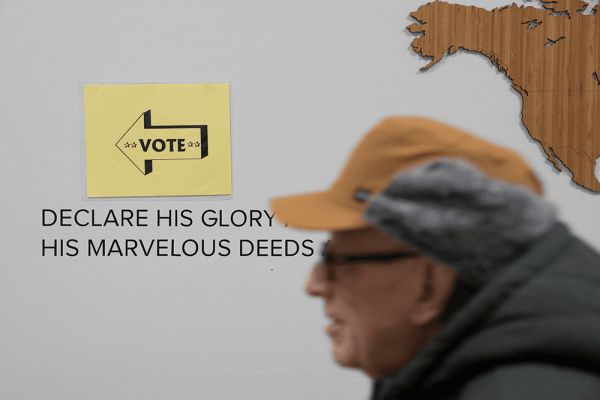America’s history is undeniably marred and rooted in the works of intense racism and subjugation. At the core of the nation’s current political divide is race and racism. To hear demeaning, divisive, and destructive speech from those who believe America is “theirs” is not uncommon to black and brown people. Unlike any other demographic in America, black Americans can unapologetically testify to the practices which “white natives” may deem as “non-American,” as distinctly American. To continually reiterate and identify statements, positions, and rhetoric as racist, is tiring, depleting.
Racism intentionally creates division and leads a country pitted against itself. Amid a nation wrecked with laced bigotry, pointed racism, and damning white nationalism, black voices and bodies are challenging the morale and future of this nation during this tumultuous political and cultural climate, a climate where the lives of black and brown people are at stake.
This increases the importance, necessity, and presence of organizations committed to the work of justice in our modern day society.
This is why the NAACP’s Youth & College Division has been and is crucial to the heart of activism against racism. Further, youth activism, especially by African Americans, has been a constant to obtain justice, equity, and freedom for America’s most disenfranchised.
“The Youth & College Division is the bloodline of the NAACP, ” said David A. Johnson, president of the Tennessee chapter of the NAACP Youth & College Division. “It gives the association the fire, fuel, and motivation to keep advancing through the trials of being a person of color in America.”
Founded in 1936 by Juanita Jackson-Mitchell, the Youth & College Division is led by Tiffany Dena Loftin and headquartered in Congressman Cummings 7th congressional district in Baltimore. According to the NAACP website, there are more than 25,000 people, under the age of 25, representing 550 junior youth councils, youth councils, high school chapters, and college chapters actively involved in the fight for civil rights — one of the largest organized groups of secular young people in the country. True to the NAACP is its commitment to grassroots organizing as best noted from its marches — including the 1917 “Negro Silent Protest Parade” in New York, the collaboration with the Student Nonviolent Coordinating Committee and Congress of Racial Equality, and others during Freedom Summer in 1964. From protesting the South African apartheid to its continual fight for the equity and freedom of black and brown people across the country, the activism of youth and young adults over the last 83 years has transformed the landscape of activism.
During the 110th National Convention of the NAACP in Detroit, Mich., thousands of delegates from the Youth & College Division attended. Convention enables moments of intentional innovation, erects bridges of generational understanding, forges highways of collaboration, paves paths of opportunity, and preserves the legacy of the ancestors.
It was at the convention that I first learned about how the Youth & College Division played a significant role in the “sit-ins” throughout the 1960s — especially the Greensboro sit-in by four North Carolina A&T students on Feb. 1, 1960. But Rev. Dr. Amos C. Brown, pastor of San Francisco’s Third Baptist Church and president of the San Francisco NAACP, informed me and others at the convention that the nation’s first “sit-ins” were led not by college students, but by young people in the Oklahoma City Youth Council and by Ms. Clara Luper.
Dr. Brown told us of Ms. Luper, a teacher and a leader in the civil rights movement, and of how she lead a sit-in with 13 children in Oklahoma City on Aug. 19, 1958. They all sat at the counter at a drug store called Katz and asked for service. Two days later, Katz corporate management desegregated its lunch counters in three days. This action led to a sit-in in Wichita, Kan., by two other NAACP Youth Council leaders. All of this highlights the boldness and relentlessness of our fore parents and persistent groundbreaking presence of the NAACP’s youth & young adults is forging of a new America.
And the evidence speaks for itself: There have been civic engagement and political action campaigns in Georgia on the campuses of Spelman College, Morehouse College, Albany State University, and others during an intense gubernatorial race in 2018; in Tennessee, Youth & College President David A. Johnson led hundreds of youth, and the nation, to advocate for the clemency of Cyntoia Brown; there was on the ground presence in Charlottesville, Va., by former Virginia State Conference Youth & College President Montae Taylor amid chaos and violence; and the NAACP’s overwhelming presence at the 2018 March for Our Lives and 2019 Women’s March where then Spelman College President Amari Fennoy spoke. And not to be diluted or diminished is the work of youth councils and college chapters across the nation including in Alabama, California, Connecticut, Florida, Texas, and others.
The work and commitment of thousands of black and brown millennials and post-millennials across the country are evidence of a living organism in functioning existence. These are the people, places, and spaces ordained to condemn the evil of this empire. An evil rooted in the imperialism of white supremacy, theocracy of Christianity void of communal concern, and nationalism aligned to a country’s exclusionary ideals regardless of its consequences.
When I look at America today, I'm reminded of the words of Rev. Dr. Jeremiah A. Wright, Jr. in his sermon ‘The Day of Jerusalem’s Fall.’
He said, "America’s chickens have come home to roost,”a prophetic reminder in this hour of unparalleled modern-day racism, xenophobia, and prejudice."
Yes, the chickens of Jack and Jane Crow, “Make America Great Again,” redlining and redistricting, bias and bigotry, prejudice and prohibition, evil and injustice, war and violence, and so much more are roosting louder than before. The crowing will only cease through intentional confrontation and building a movement led by black and brown youth poised to see this barren land, where our ancestors toiled, and harvest a sustaining crop for generations to come.
Got something to say about what you're reading? We value your feedback!







